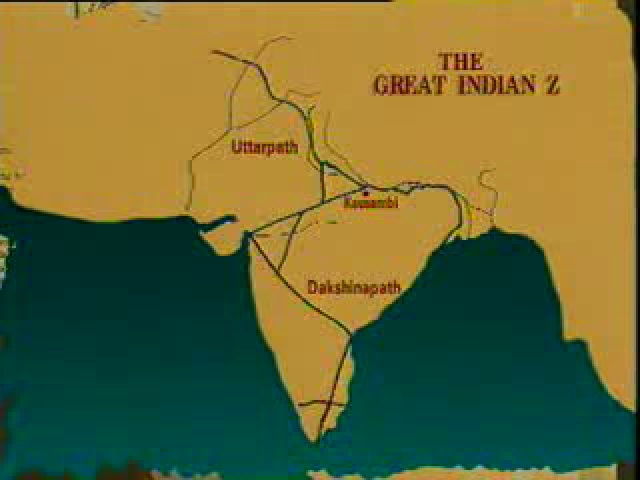The Grand Trunk Road of India is a well known route in ancient history. While remains of it still remain in use, this road is an inspiration for many National Highways in India.
The route was called the Uttarapatha and was the key feature of many empires in ancient Indian history. Take a look at the details of this route below.
What was Uttarapatha?
This route started from Kabul in Afghanistan to Chittagong in Bangladesh. It covered Khyber Bypass and connected cities like Rawalpindi, Amritsar, Attari, Delhi, Mathura, Varanasi, Patna, Kolkata, Dhaka and Chittagong.

It was a 2500 km long route which was in ancient times known as Sadak-e-Azam, Badshahi Sarak or Sadak-e-Sher Shah. The British renamed it as the Grand Trunk Road.
The road is still in use in modern free India and is in the form of National and state highways.
For example the road from Attari border to Jlandhar is called NH3 and from Jalandhar to Agra is called NH44 while from Agra to Kolkata it's called NH-19. The highway is the same route as the Grand Trunk Road or Sadak-e-Sher Shah.
It is also a part of the Asian Highway Network that was proposed in 1959 connecting Tokyo to Turkey and Istanbul ultimately meeting European Highway Networks.
Uttarapatha: The History
It was 3000 years back when Uttarapatha became the focal point for all Asian trade. The term is derived from the word Paniha, which in Atharva Veda's Prithvi Sukta mentions it as the arteries of the Indian subcontinent.
The Uttarapatha has also been mentioned by Acharya Panini and in Ashtadhyayi. Many Jataka stories of the Buddhists also mention this route.
There were two parts of the route- Northern and Southern
Northern part has been called Haimvata and the Southern part connects Lahore to Hastinapur, Delhi, Prayag, Varanasi and Patliputra.
Traders on the route had a deity that was called as Manibhadra Yaksha. In modern times this same deity's statue can be seen in front of the Reserve Bank of India as well. The traders then used to worship this statue consisting of a bag of Mani in its hand.
Dakshinapath has been mentioned in Arthashastra. It was connected with the Uttarapatha in Kaushambi.
Many Mahajanapadas around the Ganga valley were located around and about this very Uttarapatha.
Gandhara benefitted too much from this route as it was located straight on the route. Alos Mahajanapadas like Kuru, Matsya, Kosala, Magadha etc were situated on the Northern part of the Silk Route of India. Only Avanti was situated on the southern route.
Mauryan times had witnessed the Uttarapatha to begin from Balkh in Afghanistan to Tamluk in West Bengal.
The Greek ambassador Megasthenes said that the route connected Patliputra to Taxila.
Chandragupta Maurya had recreated and renovated the road and Ashoka put a lot of effort into the maintenance of this route. He established many guest houses and water bodies for the travellers. Samudragupta also made efforts for this route as mentioned in the rock edicts of the Ahokan age.
Sher Shah and Uttarapatha:
Uttarapatha was established by Sher Shah Suri.
Sher Shah defeated Humayun in 1540 and founded the Sur Dynasty
The empire spread from Balochistan to Bangladesh. Since Sher Shah gave a lot of importance to trade in his kingdom, the emperor made many reforms in his kingdom so that trade could be done.
In his time there were many structures like Post Offices, Rest Houses, monuments signifying the Sur dynasty on the route.
These were called Sarai.
Uttarapatha in the time of Mughals:
Humayaun still captured the Sur kingdom after the death of Sher Shah. The mughals called it the Badshahi sarak.
Akbar and Jehangir both took good care for the development of this road. Many gardens and monuments were also built across the route.
Jagidars used to construct various houses around the road. Kos Minars were built every 2 miles on this road.
It was kind of incentive to use the road.
Modern India: Uttarapatha
The British, since were traders focussed on making the road better place to trade. They used it for trading various items like clothing, precious stones etc. They called it the Grand Trunk Road.
In modern times the Golden Quadrilateral route passes through the same route as the Silk Route of India.
India's cultural ideas have also spread through this very route. Historians however do not agree that the modern trade route is similar to this very route despite many similarities.
Comments
All Comments (0)
Join the conversation